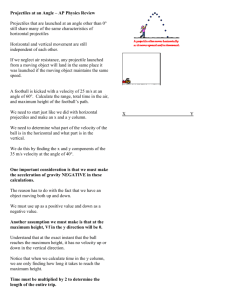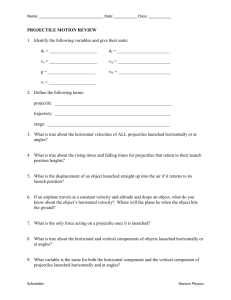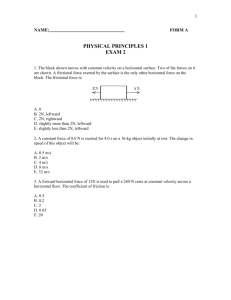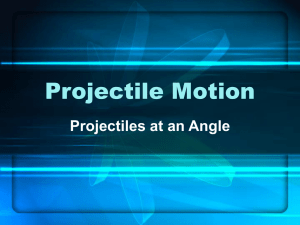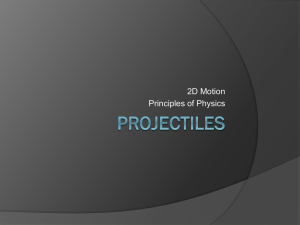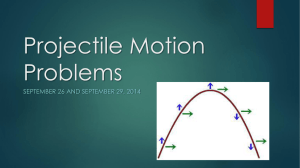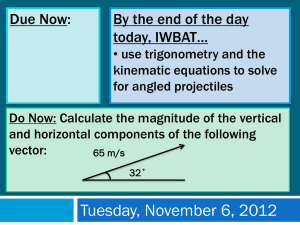CP PHYSICS - OnMyCalendar
advertisement
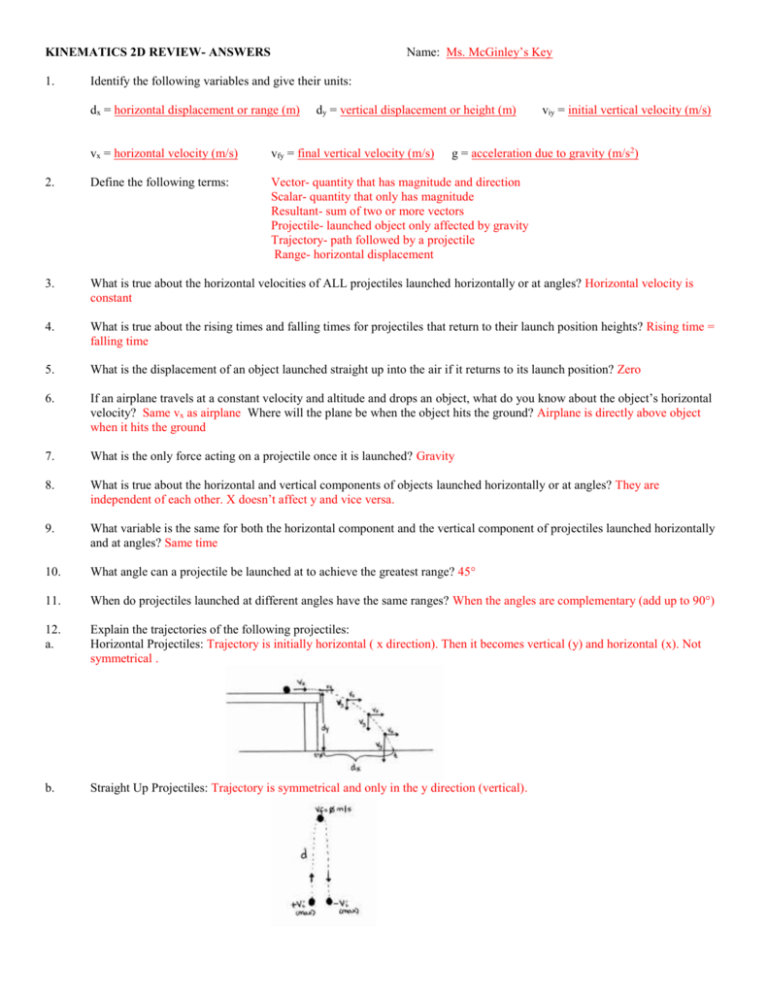
Name: Ms. McGinley’s Key KINEMATICS 2D REVIEW- ANSWERS 1. Identify the following variables and give their units: dx = horizontal displacement or range (m) dy = vertical displacement or height (m) viy = initial vertical velocity (m/s) g = acceleration due to gravity (m/s2) vx = horizontal velocity (m/s) vfy = final vertical velocity (m/s) 2. Define the following terms: Vector- quantity that has magnitude and direction Scalar- quantity that only has magnitude Resultant- sum of two or more vectors Projectile- launched object only affected by gravity Trajectory- path followed by a projectile Range- horizontal displacement 3. What is true about the horizontal velocities of ALL projectiles launched horizontally or at angles? Horizontal velocity is constant 4. What is true about the rising times and falling times for projectiles that return to their launch position heights? Rising time = falling time 5. What is the displacement of an object launched straight up into the air if it returns to its launch position? Zero 6. If an airplane travels at a constant velocity and altitude and drops an object, what do you know about the object’s horizontal velocity? Same vx as airplane Where will the plane be when the object hits the ground? Airplane is directly above object when it hits the ground 7. What is the only force acting on a projectile once it is launched? Gravity 8. What is true about the horizontal and vertical components of objects launched horizontally or at angles? They are independent of each other. X doesn’t affect y and vice versa. 9. What variable is the same for both the horizontal component and the vertical component of projectiles launched horizontally and at angles? Same time 10. What angle can a projectile be launched at to achieve the greatest range? 45° 11. When do projectiles launched at different angles have the same ranges? When the angles are complementary (add up to 90°) 12. a. Explain the trajectories of the following projectiles: Horizontal Projectiles: Trajectory is initially horizontal ( x direction). Then it becomes vertical (y) and horizontal (x). Not symmetrical . b. Straight Up Projectiles: Trajectory is symmetrical and only in the y direction (vertical). c. Angled Projectiles: Trajectory is symmetrical. Trajectory is in the y direction (vertical) and x direction (horizontal) for the total time period. 12. Solve the following problems. Show all work: list variables with units, show equations used, plug into the equations, and give answers with units!!!!! A girl throws a ball straight up into the air with a velocity of 22.7 m/s. 1) What is the final velocity of the ball at the top of its trajectory? 0 m/s 2) How high did the ball go? 26.3 m 3) How long did it take to reach its highest point? 2.32 s a. b. An object is projected horizontally at 8.0 m/s from the top of a 122.5 m cliff. 1) How long does it take to hit the ground below the cliff? 5 s 2) How far away from the base of the cliff will it strike the ground? 40 m c. A student threw a ball horizontally out of a window 9.3 m above the ground. It was caught by another student who was 11.7 m away. How long is the ball in the air before it is caught? 1.4 s What was the initial velocity of the ball? 8.4 m/s d. An airplane is flying horizontally at 148 m/s at an altitude of 2280 m. The plane releases a “care package” that falls to the ground along a curved trajectory. 1) How long does it take the package to hit the ground? 21.6 s 2) How far away will the package land on the ground? 3200 m e. A ball rolls off the top of a bookcase with a horizontal velocity of 1.85 m/s. It lands 1.30 m away from the base of the bookcase. 1) How long did it take to fall to the floor? 0.70 s 2) How tall is the bookcase? 2.4 m f. Determine the magnitude and direction of the velocity of a plane that’s flying toward 0° at 100 km/hr while the wind blows toward 90° at 65 km/h. 119.27 km/h at 33 ° g. What force does an object experience if one force is 30 N, south and the other force is 85 N, west? 90.14 N at 199° h. Find the resultant of a car that travels 15 km east then 8 km west. 7 km, east
